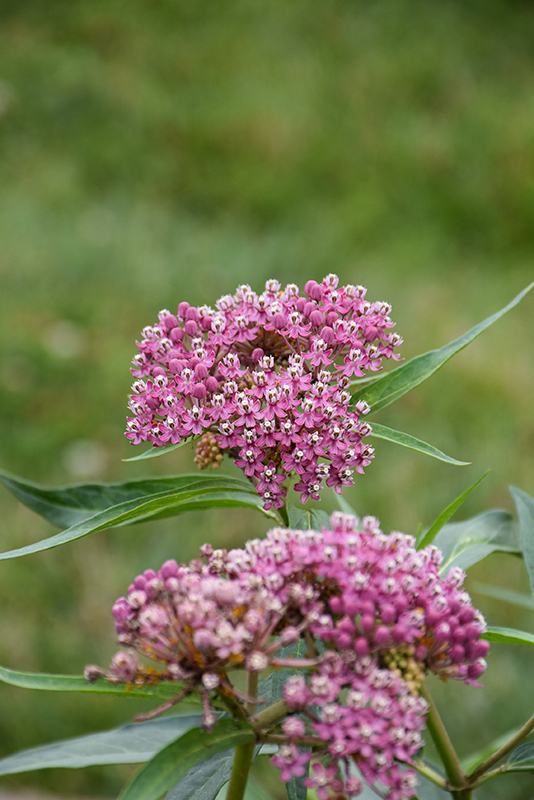Soulmate Milkweed
Asclepias incarnata 'Soulmate'
Height: 4 feet
Spread: 32 inches
Sunlight:
![]()
![]()
Hardiness Zone: 4
Other Names: Butterfly Weed
Description:
A wonderful selection for attracting butterflies to garden beds and rain gardens; this upright selection features clusters of deep rose-pink flowers and green narrow foliage; needs little to no maintenance
Ornamental Features
Soulmate Milkweed has lightly-scented rose flat-top flowers at the ends of the stems from mid summer to early fall. The flowers are excellent for cutting. Its narrow leaves remain green in color throughout the season.
Landscape Attributes
Soulmate Milkweed is an herbaceous perennial with an upright spreading habit of growth. Its medium texture blends into the garden, but can always be balanced by a couple of finer or coarser plants for an effective composition.
This is a relatively low maintenance plant, and is best cleaned up in early spring before it resumes active growth for the season. It is a good choice for attracting butterflies to your yard, but is not particularly attractive to deer who tend to leave it alone in favor of tastier treats. It has no significant negative characteristics.
Soulmate Milkweed is recommended for the following landscape applications;
- Mass Planting
- General Garden Use
- Naturalizing And Woodland Gardens
- Bog Gardens
Planting & Growing
Soulmate Milkweed will grow to be about 3 feet tall at maturity, with a spread of 32 inches. It tends to be leggy, with a typical clearance of 1 foot from the ground, and should be underplanted with lower-growing perennials. It grows at a medium rate, and under ideal conditions can be expected to live for approximately 10 years. As an herbaceous perennial, this plant will usually die back to the crown each winter, and will regrow from the base each spring. Be careful not to disturb the crown in late winter when it may not be readily seen!
This plant does best in full sun to partial shade. It is quite adaptable, prefering to grow in average to wet conditions, and will even tolerate some standing water. It may require supplemental watering during periods of drought or extended heat. This plant does not require much in the way of fertilizing once established. It is not particular as to soil type or pH. It is quite intolerant of urban pollution, therefore inner city or urban streetside plantings are best avoided. This is a selection of a native North American species. It can be propagated by division; however, as a cultivated variety, be aware that it may be subject to certain restrictions or prohibitions on propagation.

